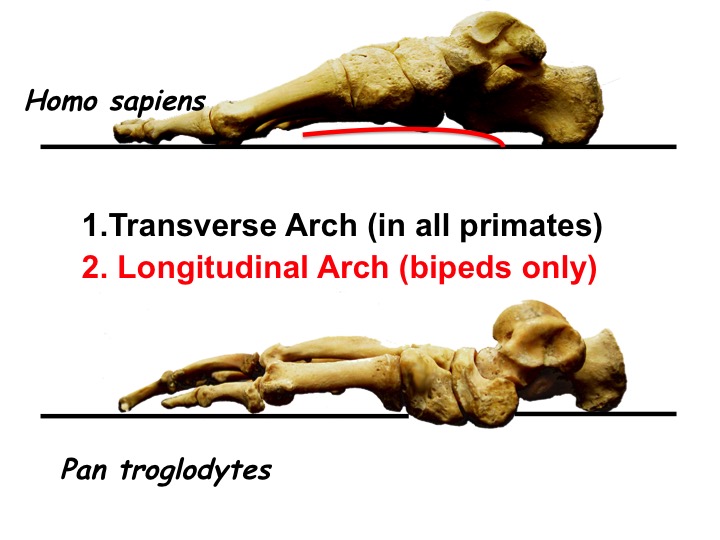Lab 9 Anatomical Correlates of Locomotor Adaptations
1/38
There's no tags or description
Looks like no tags are added yet.
Name | Mastery | Learn | Test | Matching | Spaced |
|---|
No study sessions yet.
39 Terms
RELATIVE LIMB LENGTHS
(forelimb to hindlimb) is an anatomical correlate of locomotion.
Arm length = Leg length
all four limbs are used equally in locomotion; quadrupedal
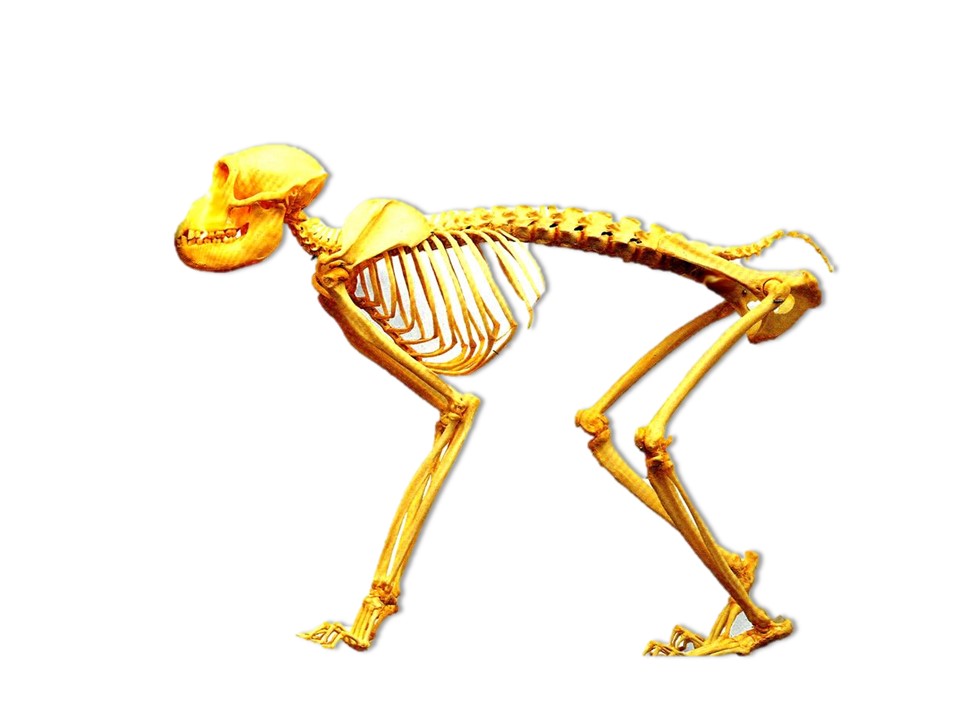
Leg length > Arm length
legs are used most in locomotion; if feet are extra long, it's a leaper; if feet are extra short, it's a biped
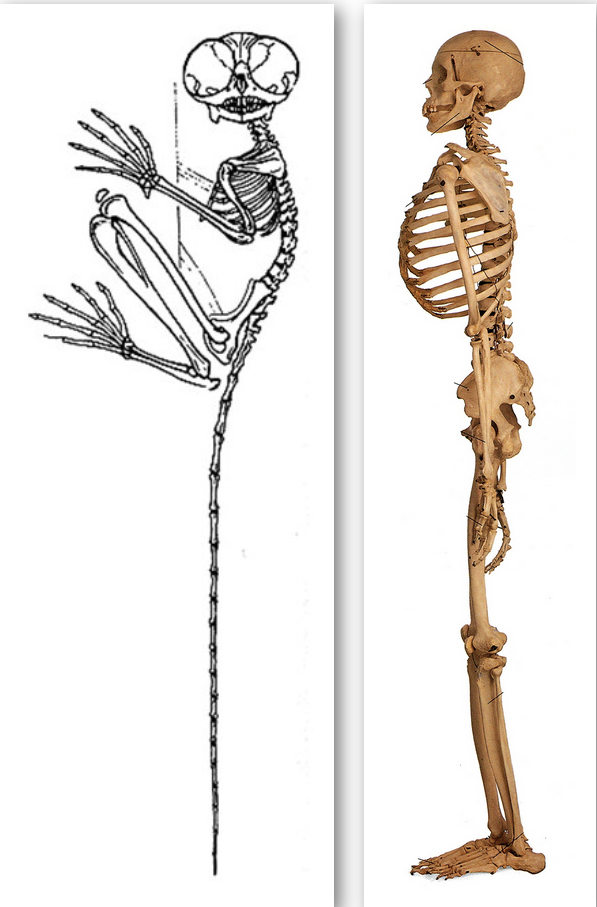
Arm length > Leg length
arms are used most in locomotion; suspensory
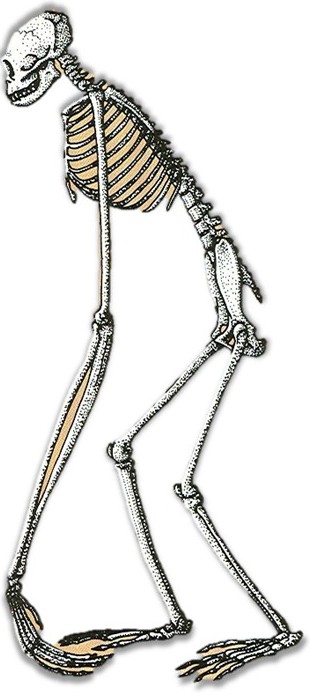
Mixed relative limb lengths
this is a very special category restricted to knuckle-walking African apes. Like all suspensory-adapted hominoids, the gorilla and chimp have arms longer than torsos but relative limb lengths are variable and range from suspensory to quadrupedal; always check upper limb features for evidence of suspensory adaptations (e.g., spherical humeral head, short olecranon process)!!!
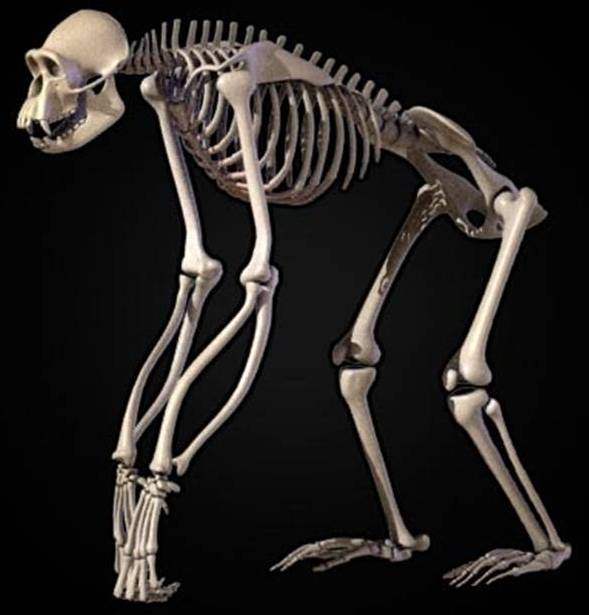
INTERMEMBRAL INDEX
quantifies the relationship between forelimb length and hindlimb length; the resulting ratio correlates with locomotor adaptations
Forelimb (arm) length
humerus length + radius length
Hindlimb (leg) length
femur length + tibia length
INTERMEMBRAL INDEX EQUATION
Forelimb length x 100 Hindlimb length
II of 90-110
limbs equivalent in length; quadruped
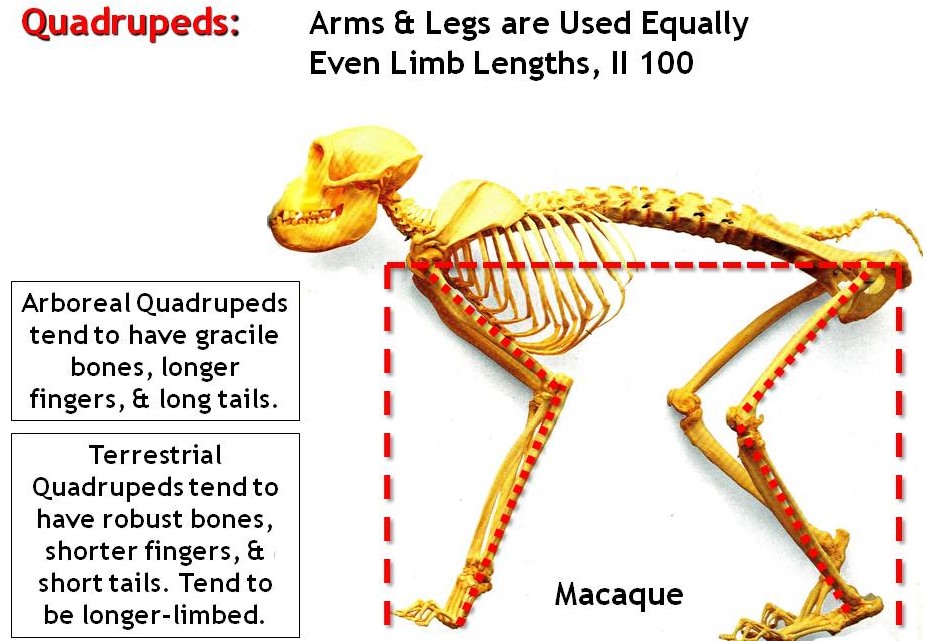
II 110+ (above 110)
arms longer than legs; suspensory ape
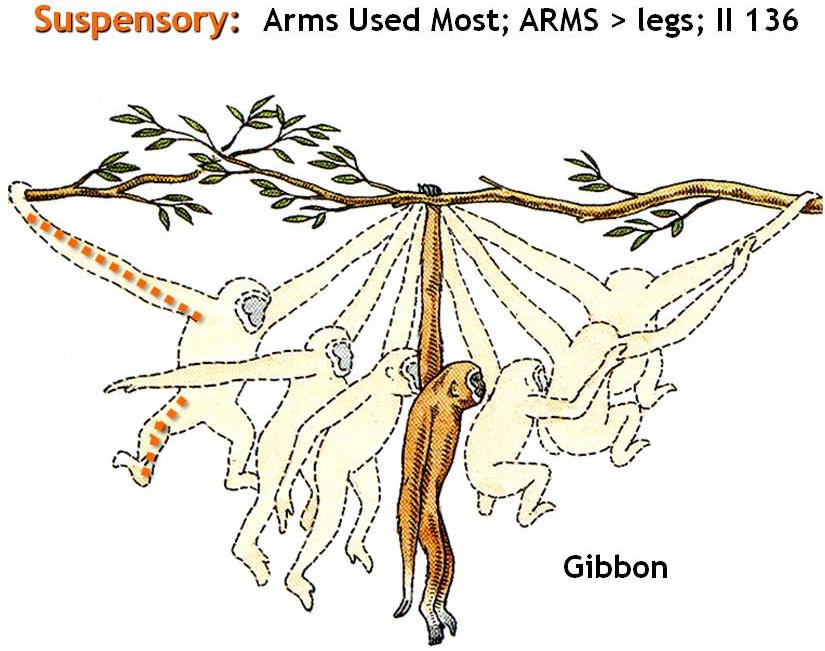
II below 90
legs longer than arms; if foot is extra long, it is a leaper; if foot is extra short, it is a biped
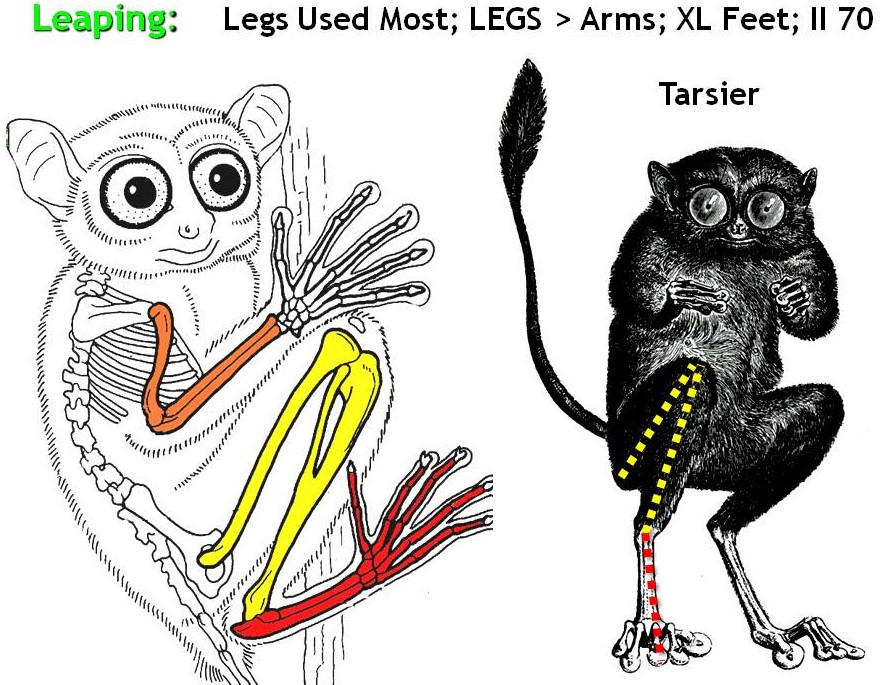
THE BIG EXCEPTION
knuckle-walking African apes (gorillas, chimps) have mixed limb length proportions and the Intermembral Index ranges from suspensory to quadrupedal; always check for upper limb features (e.g., spherical humeral head, short olecranon process) associated with suspensory adaptations!!!
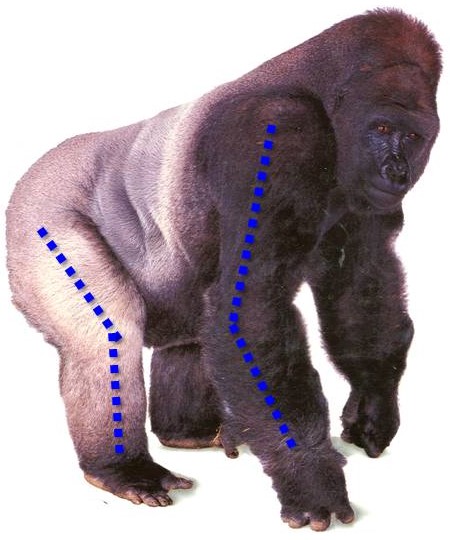
FOOT LENGTH
relative foot length is an important clue to primate locomotion
Medium Length Foot
not extra long and not extra-short; quadruped or suspensory ape
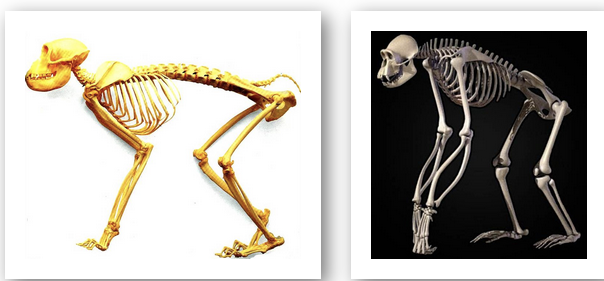
Extra Long Foot
Extra Short Foot
about the same length as femur or tibia; leaper
not as long as the femur or the tibia; biped; double-check your decision -- if it does NOT have a divergent hallux, it has the extra-short foot of a HUMAN biped!
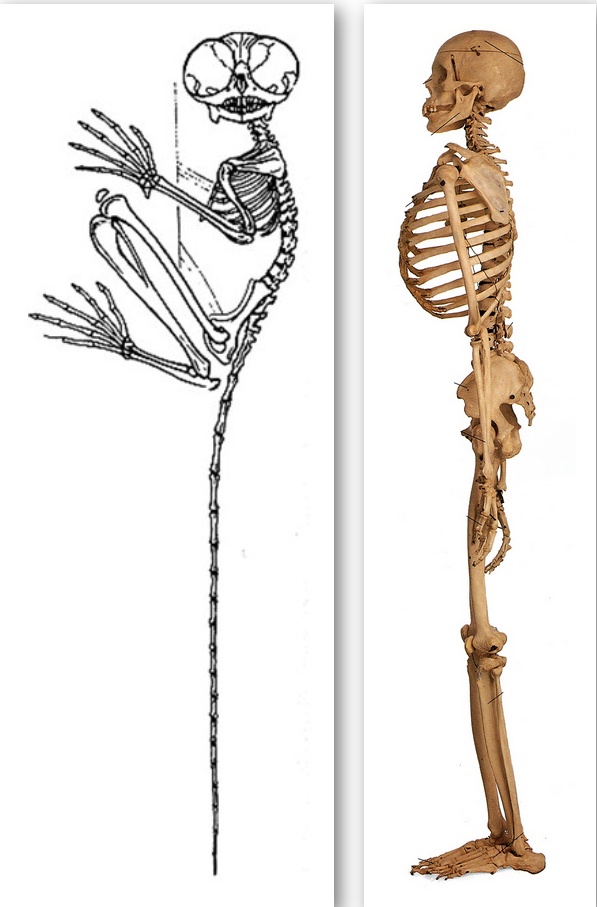
TORSO BREADTH
the relative breadth (side-to-side) and depth (front-to-back) of the torso corresponds with shoulder joint placement
differences are correlated with non-suspensory vs. suspensory locomotor adaptations.
Wide torsos are present in apes which have their scapula on the back of the torso. Because of this they have a wider range of motion as the shoulder joint faces away from the body.
Narrow torsos are present in all other primates which have their scapula on the side of the torso. Becuase of this they have very narrow range of motion.

TORSO LENGTH & TAIL
most quadrupedal mammals have a long back due to the high number of lumbar (lower back) vertebrae and a tail made possible by extension of the spinal column to include caudal (tail) vertebrae; this is the condition of non-suspenory primates.
Suspensory hominoid primates benefit from a shortened back due to loss of some lumbar vertebrae and all of the caudal vertebrae (no tail).
Primate torso length & tail differences are correlated with non-suspensory vs. suspensory locomotor adaptations.
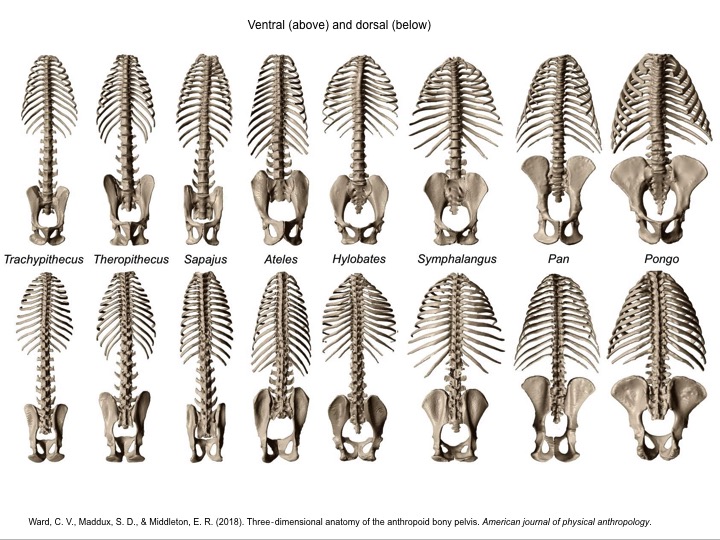
SHOULDER BLADE (SCAPULA) & SHOULDER JOINT PLACEMENT
the location of the shoulder joint influences the placement of the shoulder blade; differences are correlated with non-suspensory vs. suspensory locomotor adaptations
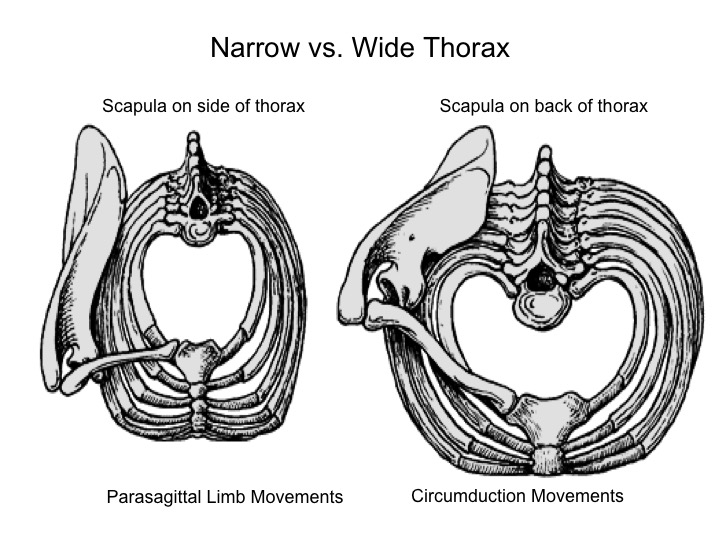
Non-suspensory primate: quadrupeds & leapers (TORSO, SHOULDER)
Torso is narrow from side-to-side and deep from front-to-back.
Long torso has more lumbar (lower back) vertebrae and ends in a tail (caudal vertebrae); quadrupeds & leapers.
Shoulder joint is located in front of the torso and the shoulder blade drops down on the side of the torso.
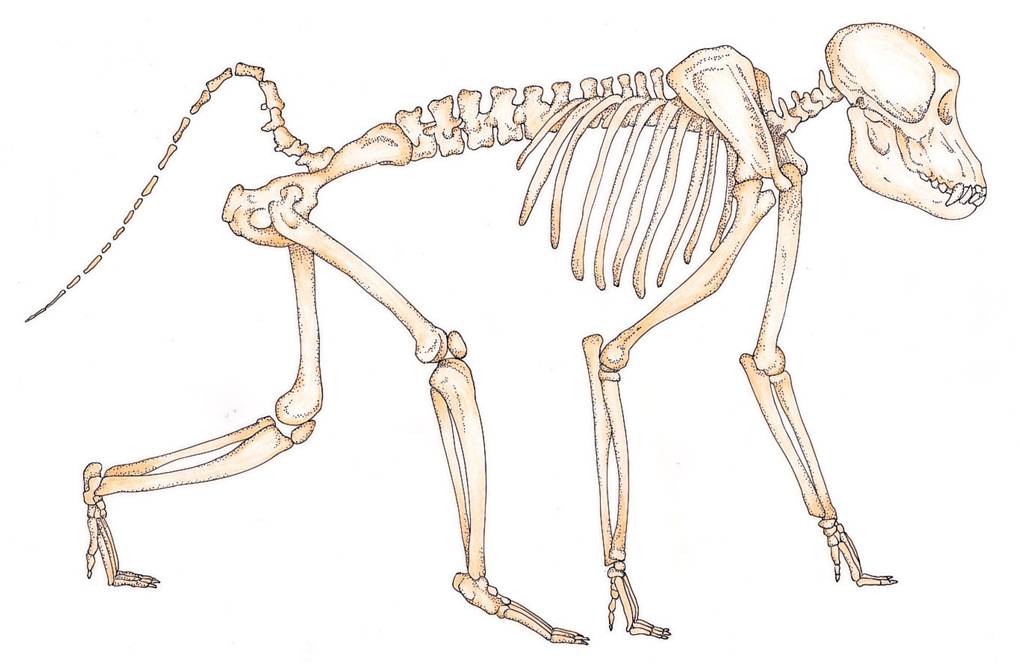
Suspensory primate: hominoid (apes & humans) (TORSO, SHOULDER)
Torso is broad from side-to-side and shallow from front-to-back.
Short torso has fewer lumbar vertebrae and does not end in a tail (NO caudal vertebrae).
Shoulder joint is pushed out to the side of the torso and this shoves the shoulder blade onto the back of the torso.
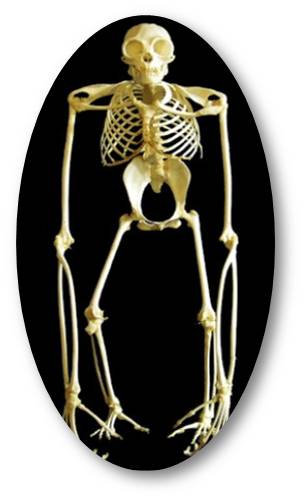
Humeral head shape: ovoid or spherical
The shape of the humeral head can be oval in shape like in the humerus on the left side of the image. This shape can restrict movement in the shoulder joint. WE see this type of joint structure in quadrupeds.
The humerus on the right has a spherical humeral head shape which allows for a greater range of motion.
We see this shape in more suspensory hominoids like non-human apes and humans.
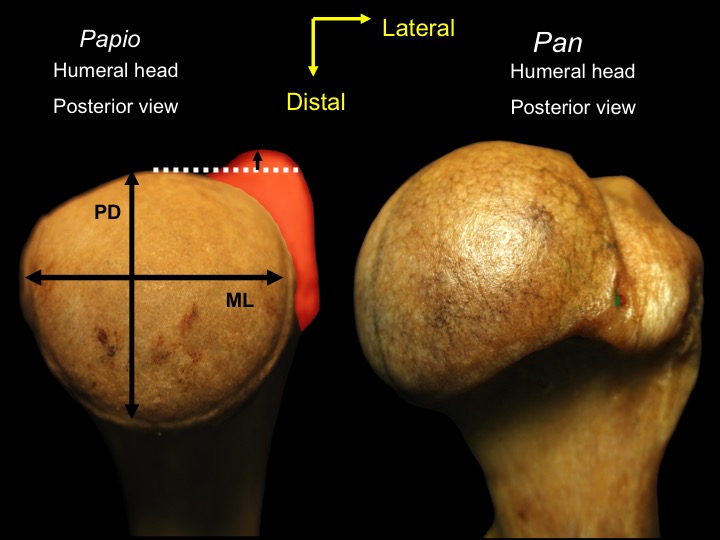
Olecranon process
A major feature of the ulna which is the top most section of the ulna.
In some quadrupedal primates this is long, like in the ulna on the top.
In apes, this tends to be short, like in the ulna on the bottom.
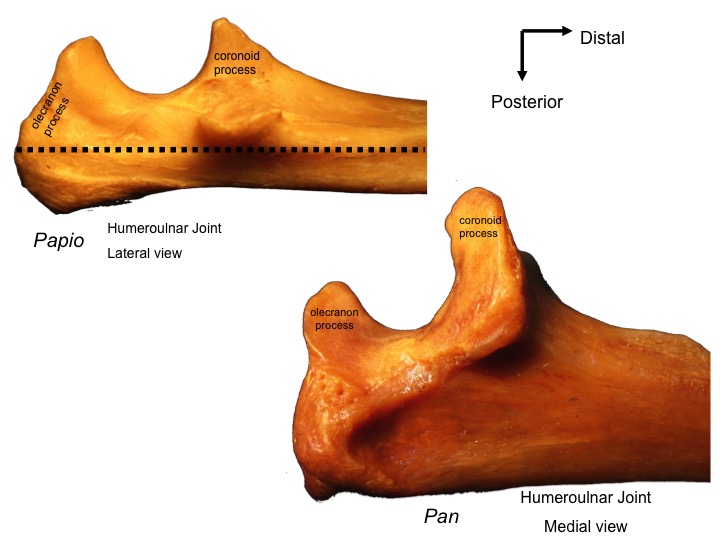
ARM JOINTS & RANGE OF MOTION
non-suspensory quadrupedal and leaping primates have restricted _____________; suspensory hominoid primates have enhanced _________
Non-suspensory primates (quadrupeds, leapers)
Non-suspensory primates (quadrupeds, leapers) (ARM JOINTS & RANGE OF MOTION)
Shoulder joint: 180 degrees rotation, ovoid humeral head
Elbow joint: 90 degrees rotation, limited extension due to long olecranon process;
Wrist joint: restricted mobility due to full wrist bone contact
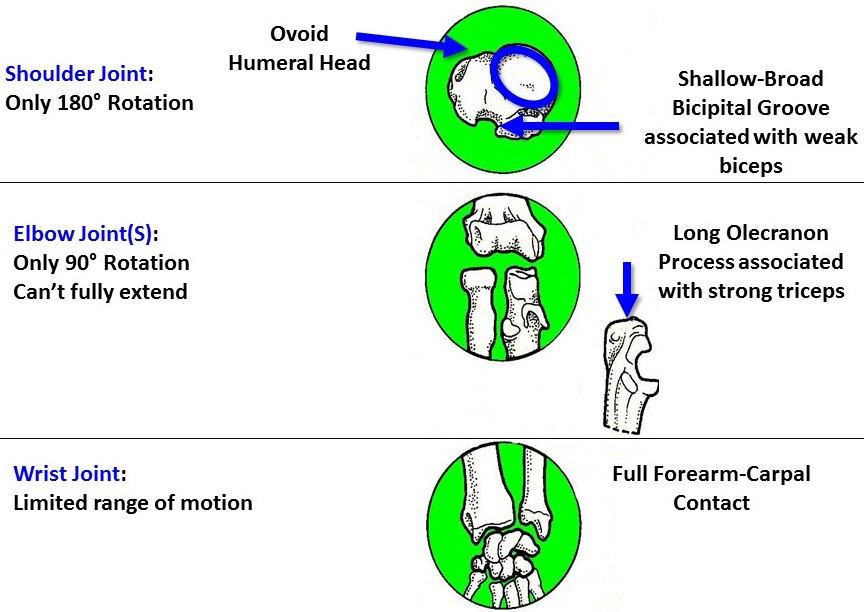
Suspensory hominoid primates (apes & humans) (ARM JOINTS & RANGE OF MOTION)
Shoulder joint: 360 degrees rotation, spherical humeral head
Elbow joint: 180 degrees rotation, full extension due to short olecranon process
Wrist joint: flexible due to incomplete wrist bone contact
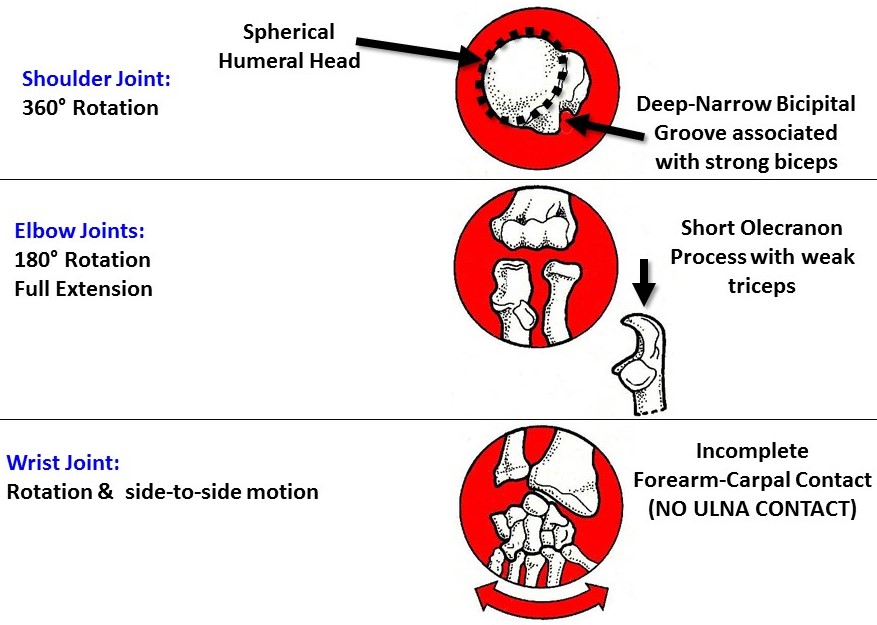
Carpal tunnel syndrome
hominoid wrist joint flexibility is accompanied by susceptibility to this
Asian apes (gibbons, orangutans) must avoid weight-bearing at the heel of the hand. In contrast, African apes (gorillas, chimps) have specialized knuckle-walking adaptations that lock the wrist straight so that the heel of the hand cannot touch the ground during terrestrial locomotion.
Human bipedalism allows ground travel without weight-bearing by hands but our hands are employed in other ways (e.g., typing, texting, gaming, playing the violin, etc.) that can result in carpal tunnel syndrome (this is a debilitating and painful condition).
.
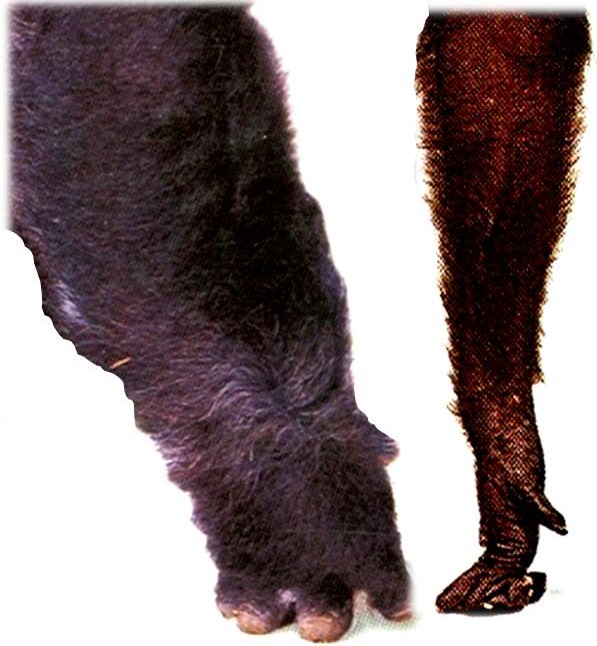
LOWER BODY FEATURES OF NON-BIPEDAL PRIMATES & BIPEDAL PRIMATES
pelvis, femur, tibia, and foot features detail the principle distinction between non-human primates and human primates; humans are the only primates with anatomical adaptations for bipedalism!
Pelvic height: tall
Iliac blade: flat
non-bipedal primate
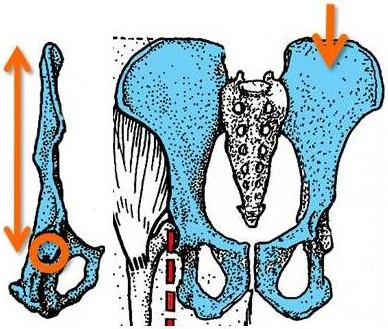
Pelvic height: short
Iliac blade: curved
bipedal human
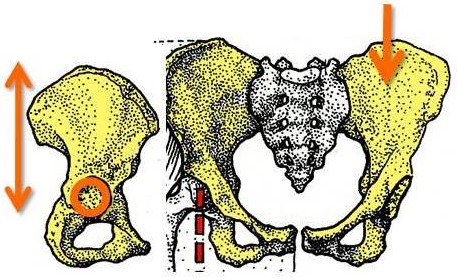
Femoral angle: absent
non-bipedal primate
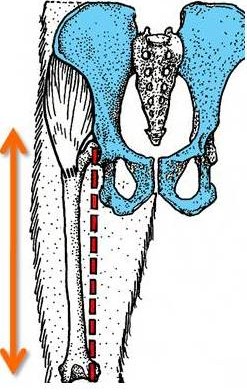
Femoral angle: present
bipedal human

Tibial condyles different in size
non-bipedal primate
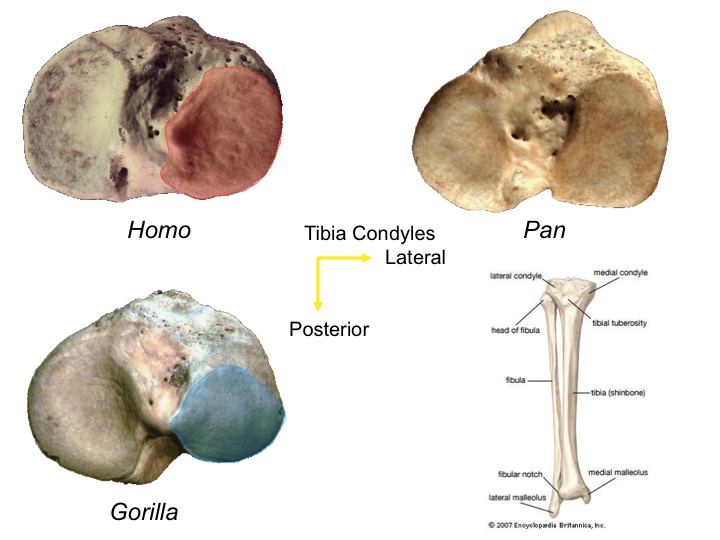
Tibial condyles similar in size
bipedal primate
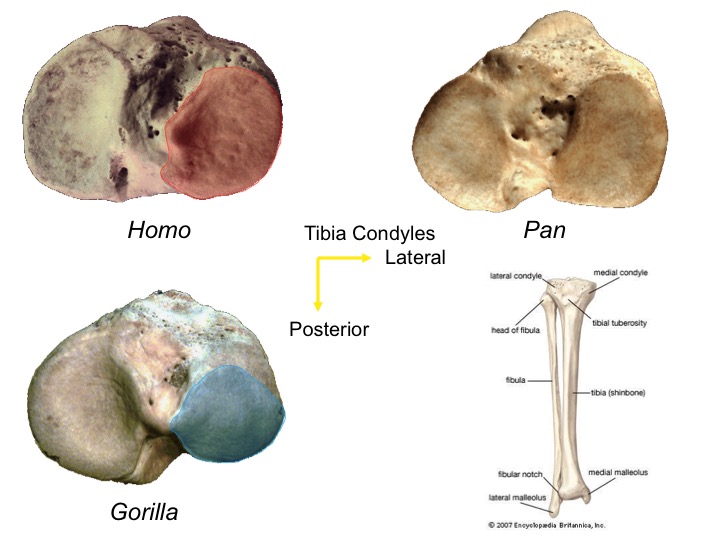
Divergent abducted hallux: present
non-bipedal primate
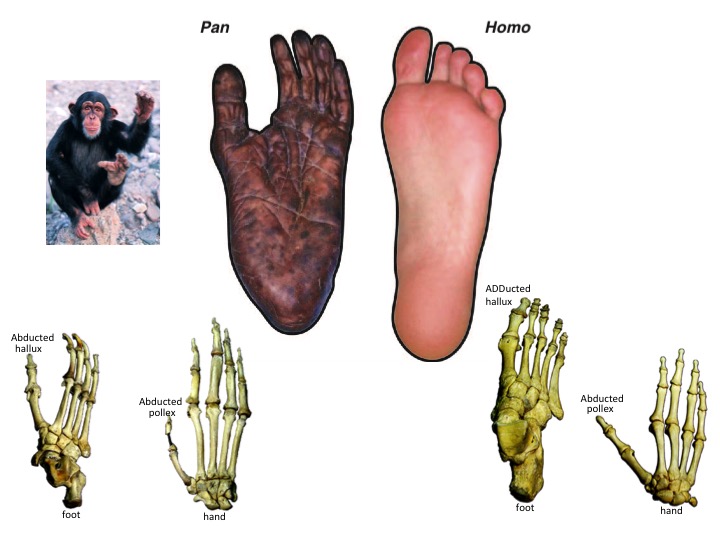
Non-divergent adducted hallux
bipedal primate
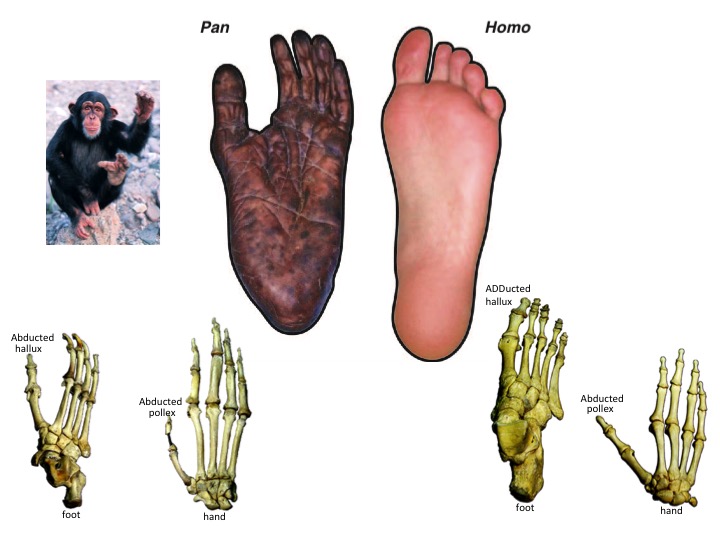
Arched foot: absent
non-bipedal primate
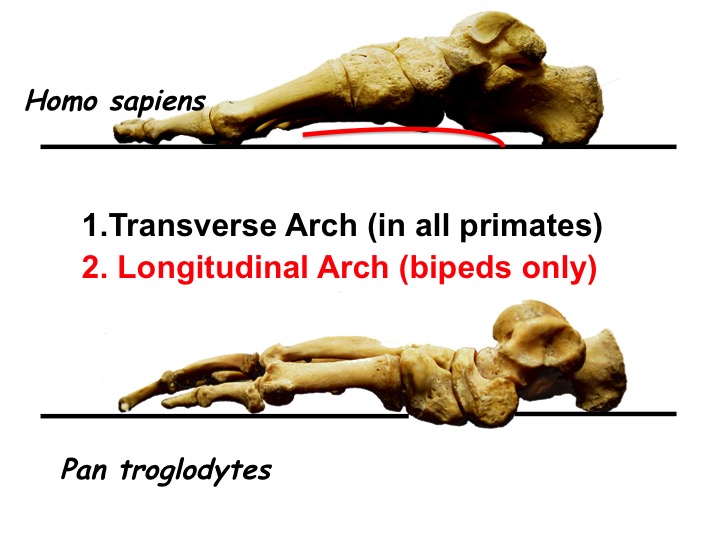
Arched foot: present
bipedal apes
